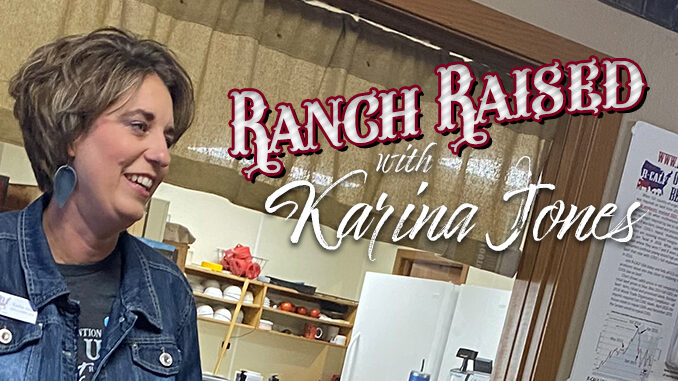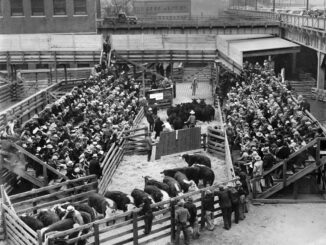
Ranch Raised – Episode 81
After a busy week away from home last week, there was nothing better than having my husband make the coffee this morning and get back in to the routine of getting the kids on the bus! [READ MORE…]

After a busy week away from home last week, there was nothing better than having my husband make the coffee this morning and get back in to the routine of getting the kids on the bus! [READ MORE…]

The stock show word of the day is “PRIDE”! Everywhere I look around at the Black Hills Stock Show, I see people that are proud of what they are doing. [READ MORE…]

It has been an absolute pleasure connecting with cattle producers here at the Black Hills Stock Show. It makes my heart swell to everyone collaborating and working together. [READ MORE…]

I am still in the thick of it up here at the Black Hills Stock. Yesterday was an amazing day starting the morning off with the first ever Cattle Industry Townhall meeting at the Stock Show. A strong crowd of a couple hundred people were on hand. Views of the livestreaming were strong and there is no doubt that event was well received. [READ MORE…]

Today is a huge day! Check out the Your Ag Network Facebook page or YouTube channel to watch the cattle industry town hall meeting! What?!?! Your Ag Network even has a YouTube channel! Amazing, right! Truly thee best farm and ranch radio network out there, covering the events that are important to producers. [READ MORE…]

I had a blast last week walking through history and sharing with you stories and facts about the Omaha Stockyards! If you missed an episode or love cattle industry history, you can catch all of those episodes from last week on the Your Ag Network app or website. [READ MORE…]

The Omaha Stockyards spurred growth of jobs in other industries related to the stockyard. Immigrants flooded in from all over Europe. The men worked long, grueling hours to build a life for themselves and their families. [READ MORE…]

By 1892 the Omaha stockyard was pulling in 25 million dollars’ worth of business. Around 1900, the stockyards added new pens and brick floors along with new concrete watering troughs and weighing scales. The sheep barn was also rebuilt to hold 100,000 animals, and the new block horse and mule barn was hailed as “the largest and best single barn in the world. At its height of, the Omaha stockyard covered almost 250 acres! In 1910, 20,000 animals were arriving DAILY including cattle, sheep, hogs, and goats from all over the American west! [READ MORE…]

Before there were livestock markets and sale barns dotted the Midwest prairie towns, the big ranches were sending their market stock to the huge livestock market in Chicago, IL. [READ MORE…]

So, cattle towns were midwestern frontier settlements that catered to the cattle industry. The economies of these communities were heavily dependent on the seasonal cattle drives from Texas, which brought the cowboys and the cattle that these towns relied upon. Cattle towns were found at the junctions of railroads and livestock trails. These towns were the destination of the cattle drives, the place where the cattle would be bought and shipped off to urban meatpackers, midwestern cattle feeders, or to ranchers on the central or northern plains. [READ MORE…]
Copyright © Your Ag Network 2024